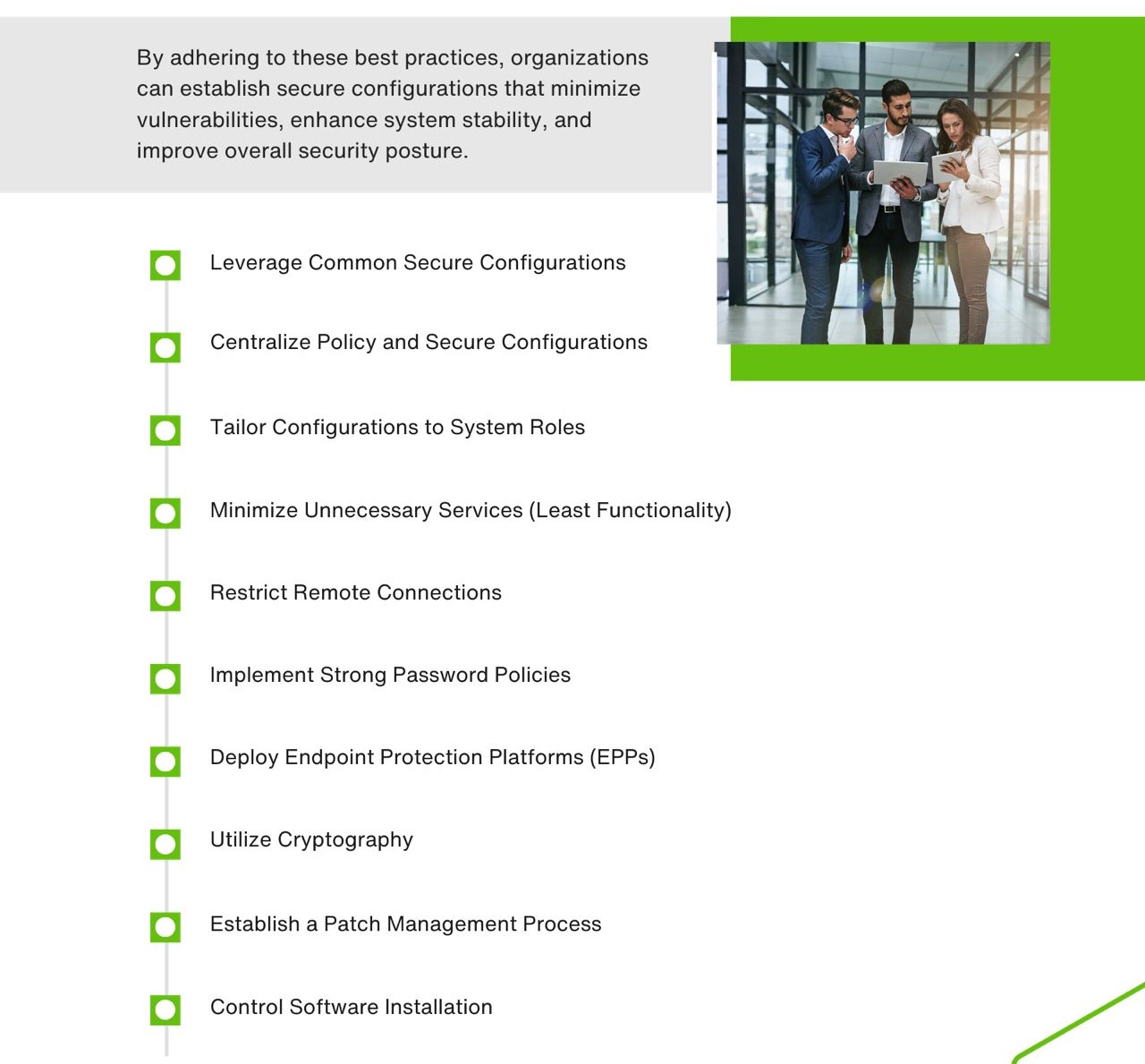Security Hardening
SecHard provides automated security hardening auditing, scoring and remediation for servers, clients, network devices, applications, databases, and more.


Security Configuration Management (SCM) is a critical aspect of cybersecurity that involves the systematic management and control of an organization’s information system configurations to ensure their security and compliance with established standards and policies. SCM encompasses the identification, implementation, and maintenance of security settings and configurations across various hardware, software, and network components.
Organizations should base their secure configuration settings on widely recognized standards, such as those provided by the National Checklist Program. These checklists offer detailed guidance for configuring a range of commercial products to enhance security. Utilizing Security Content Automation Protocol (SCAP)-enabled tools can streamline the assessment process, allowing for automated evaluations of system configurations against established benchmarks. This approach ensures that systems are consistently configured according to industry best practices, reducing the likelihood of vulnerabilities.
Security configurations should be customized to align with the specific roles and functions of system components. For example, a server designated as a Windows domain controller may warrant more stringent security measures, such as enhanced auditing settings, compared to a standard file server. This tailored approach ensures that security settings are appropriate for the level of sensitivity and exposure of each system component.
In environments with varying levels of exposure, such as a public-facing web server in a demilitarized zone (DMZ) versus an internal web server, the security configurations should reflect the differing risk profiles. A web server in a DMZ, for instance, should operate with minimal services and tighter security controls compared to an internal server that may have additional protections from the internal network. This differentiation helps to minimize the attack surface and protect critical assets according to their exposure and role.

Establishing Secure Baselines: Defining and documenting the secure configuration settings for each system component based on industry best practices, such as guidelines from the Center for Internet Security (CIS) or the National Institute of Standards and Technology (NIST).
Continuous Monitoring and Enforcement: Regularly monitoring systems to detect deviations from the secure baseline configurations and enforcing compliance through automated tools and processes.
Change Management: Managing and controlling changes to system configurations to ensure that security is not compromised. This includes reviewing, testing, and approving changes before they are implemented.
Vulnerability Management: Identifying and addressing vulnerabilities in system configurations that could be exploited by attackers. This involves regular scanning, patch management, and remediation activities.
Auditing and Reporting: Conducting periodic audits to verify compliance with security policies and standards. SCM tools often provide reporting capabilities to document compliance status and support regulatory requirements.
SecHard provides automated security hardening auditing, scoring and remediation for servers, clients, network devices, applications, databases, and more.
A powerful identity and access management software to get compliant with Cyber Hygiene and to prevent attacks like privilege abuse, ransomware and more!
SecHard solves the risk awareness problem in asset management. Automated discovery, access, identify and remediation features provide ultra-wide visibility for all regulations.
With the passive scanning method, SecHard operates the vulnerability detection and management processes for all IT assets without creating any risks.
SecHard auto-discovers the certificates in companies’ environment, reports the expiration dates of these certificates, and it can automatically renew some of these certificates through well-known certificate authorities.
SecHard's unique risk assessment formula calculates the real-world risk scores by combining asset group risk scores, security hardening scores, and vulnerability scores.
Powerful and customizable network device management with backup/restore, configuration change detection, performance monitoring, bandwidth monitoring, and firmware upgrade.
Integrated performance and availability monitoring for servers, network devices, databases, applications, IoT, and industrial control systems.
Centralized Authentication, Authorization and Accounting (AAA) for *nix systems and network devices with Microsoft Active Directory integration.
Simplified log management across network devices and servers, real-time alarms based on critical events, log forwarding in Syslog and CEF formats.
Book a meeting with SecHard experts.
